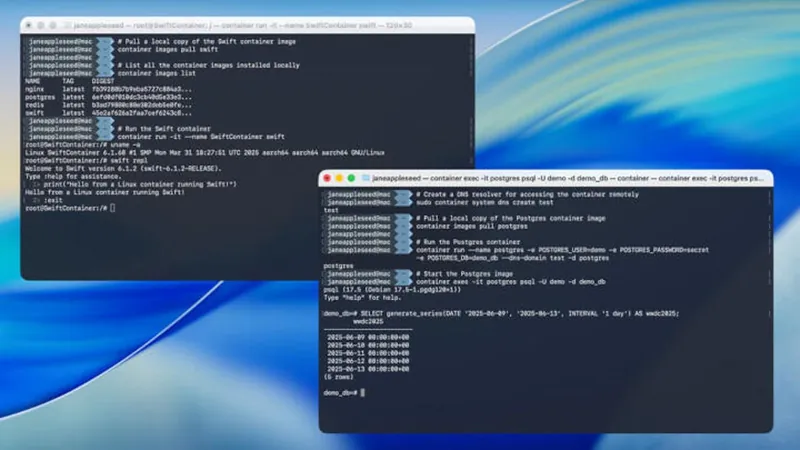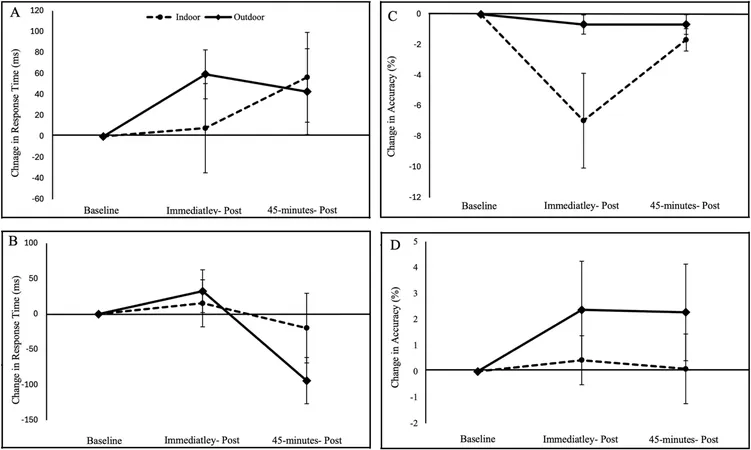
Apple Supercharges Linux Containers on Macs – Here’s What You Need to Know!
2025-06-13
Author: Jia
Apple's Bold Move at WWDC 2025
During the excitement of Apple's Worldwide Developers Conference 2025, a game-changing revelation slipped under the radar: Apple is rolling out a new open-source containerization framework and a shell tool named Container. Designed to leverage the power of Linux containers as agile virtual machines (VMs) directly on MacOS, this move is set to revolutionize development on Mac systems.
Optimized for Apple Silicon with Native Integration
This innovative framework is specifically optimized for Apple Silicon and will be seamlessly integrated into the upcoming MacOS 26, codenamed Tahoe. While there are existing third-party tools like Docker and Podman that allow Linux container usage, Apple's Container aims to enhance this capability directly on its operating system, making it much more streamlined for users.
Swift and Smart: The Technology Behind Container
Written in Swift and licensed under Apache 2, Apple claims that these containers achieve lightning-fast sub-second start times thanks to an optimized Linux kernel configuration and a minimal root filesystem featuring a lightweight init system. To get started, users will need any Mac with Apple Silicon, MacOS 15, and the Xcode 26 beta.
A Unique Approach to Container Management
What sets Apple's container framework apart is its use of a custom init system, vminitd, also crafted in Swift. This system efficiently manages everything from process launching and filesystem mounting to host-container communication. Unlike conventional container strategies that utilize a single, often bloated Linux VM for multiple containers, Apple's framework spins up a lightweight VM for each container, based on the highly regarded Kata Containers project.
Enhanced Security and Privacy Features
Each container operates within its isolated Linux kernel environment, significantly boosting security and privacy. Additionally, the minimal root filesystem omits most core utilities and dynamic libraries, which not only reduces the attack surface but also simplifies maintenance. Moreover, containers can each be assigned a dedicated IP address, eliminating the headaches of port forwarding and enhancing network isolation.
Initial Challenges but a Bright Future
However, early adopters might hit some bumps. If you're trying to run Container on the current MacOS 15, be prepared for some networking issues due to conflicts between the network XPC helper and container subnet addresses. Fortunately, Apple assures that these problems will be resolved in the imminent Tahoe release.
Why This Matters for Developers
So why is Apple taking this leap into Linux territory? The answer lies in catering to developers working on Linux projects, highlighting a clear demand for robust container support on Mac systems. By embracing open-source tools tailored to developers' needs, Apple positions MacOS as a leading platform for container-based development, much like Microsoft has with its Windows Subsystem for Linux.
Conclusion: A New Era for MacOS Developers
With this strategic initiative, Apple is not only acknowledging the importance of Linux containers in contemporary software development but is also strengthening its ecosystem for developers, making it an enticing platform for innovative projects. The future looks bright for Mac users eager to dive into Linux development!


 Brasil (PT)
Brasil (PT)
 Canada (EN)
Canada (EN)
 Chile (ES)
Chile (ES)
 Česko (CS)
Česko (CS)
 대한민국 (KO)
대한민국 (KO)
 España (ES)
España (ES)
 France (FR)
France (FR)
 Hong Kong (EN)
Hong Kong (EN)
 Italia (IT)
Italia (IT)
 日本 (JA)
日本 (JA)
 Magyarország (HU)
Magyarország (HU)
 Norge (NO)
Norge (NO)
 Polska (PL)
Polska (PL)
 Schweiz (DE)
Schweiz (DE)
 Singapore (EN)
Singapore (EN)
 Sverige (SV)
Sverige (SV)
 Suomi (FI)
Suomi (FI)
 Türkiye (TR)
Türkiye (TR)
 الإمارات العربية المتحدة (AR)
الإمارات العربية المتحدة (AR)